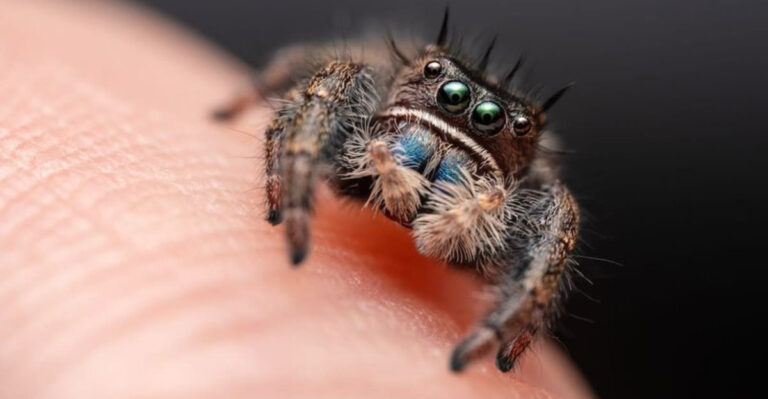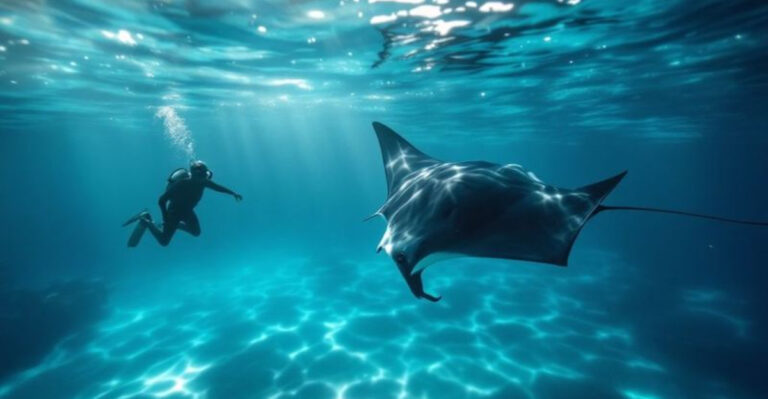15 Stingrays Commonly Spotted In Florida Waters (And How To Stay Safe)
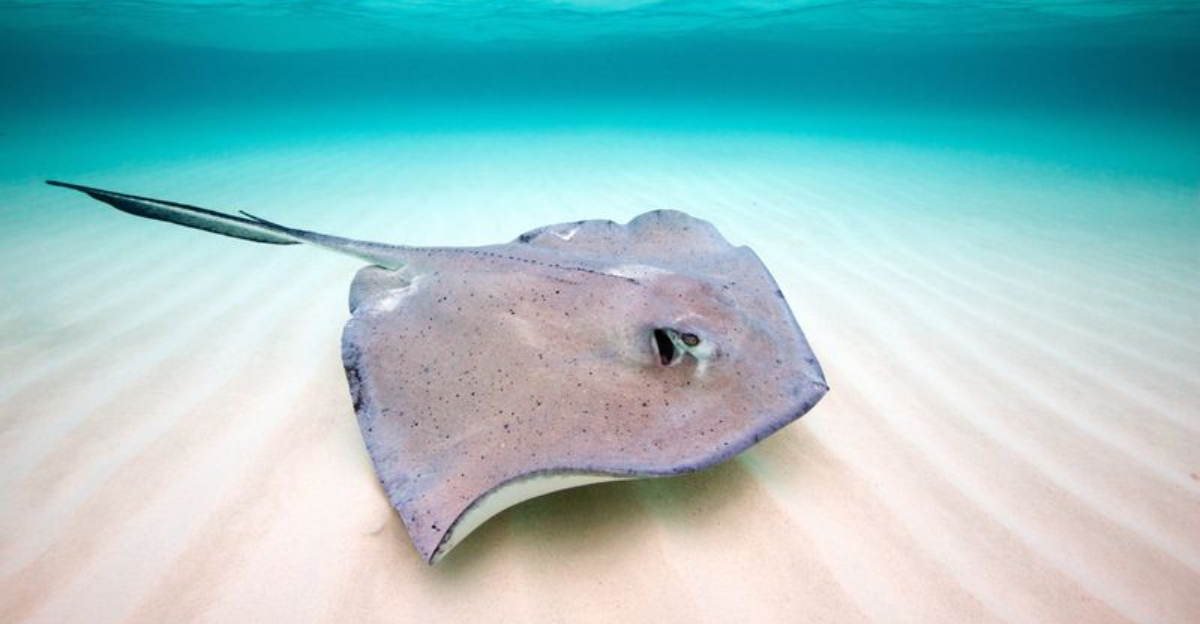
Florida’s crystal-clear waters hide some fascinating underwater residents – stingrays! These flat, graceful creatures glide through coastal areas, bays, and inlets throughout the Sunshine State.
While most stingrays mind their own business, knowing which species you might encounter and how to avoid painful stings makes beach trips safer and more enjoyable.
1. The Shuffle-Worthy Southern Stingray
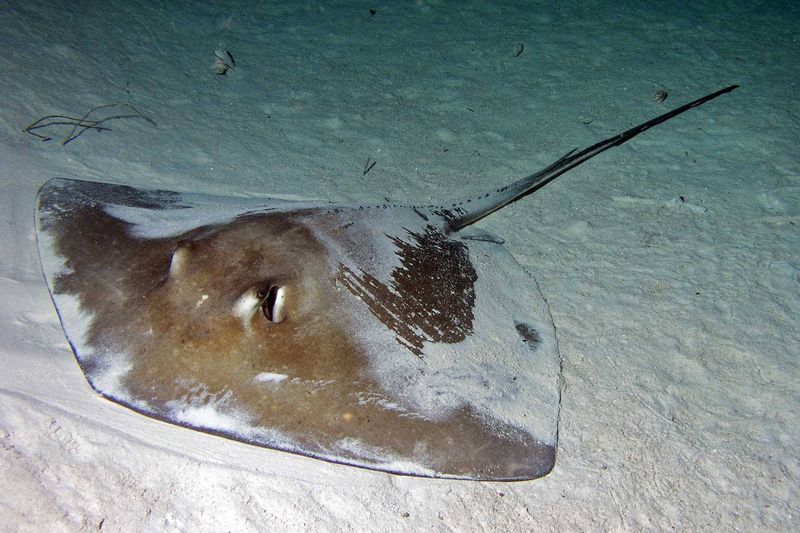
Dinner plate-sized and sporting a distinctive diamond shape, these common rays love hanging out in shallow sandy areas. Their dark gray or brown coloring provides perfect camouflage when they bury themselves.
Do the ‘stingray shuffle’ when wading – slide your feet along the seafloor instead of stepping down. This gentle movement alerts rays to your presence, giving them time to swim away peacefully.
2. Atlantic Stingray’s Sneaky Hideouts
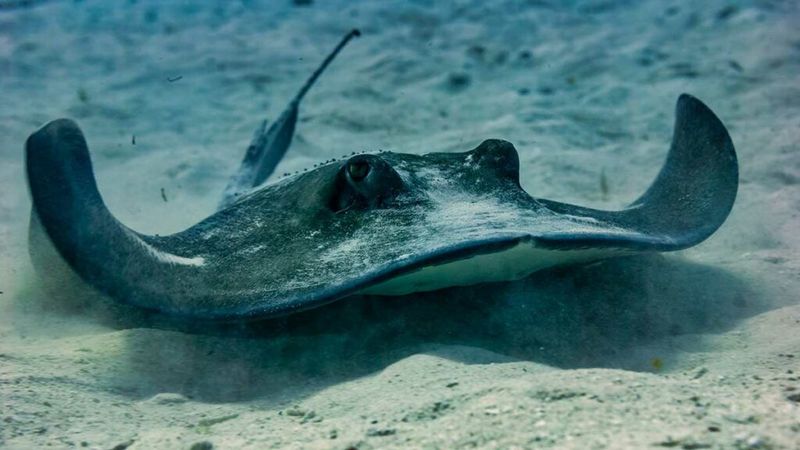
Smaller than their southern cousins, these adaptable rays thrive in both saltwater and freshwater environments. You’ll spot their rounded bodies in coastal bays, rivers, and even lakes!
Watch for slight depressions in sandy bottoms – these are telltale signs of buried Atlantic stingrays. Always shuffle your feet and scan ahead when exploring shallow waters.
3. Bluntnose Stingray’s Impressive Wingspan
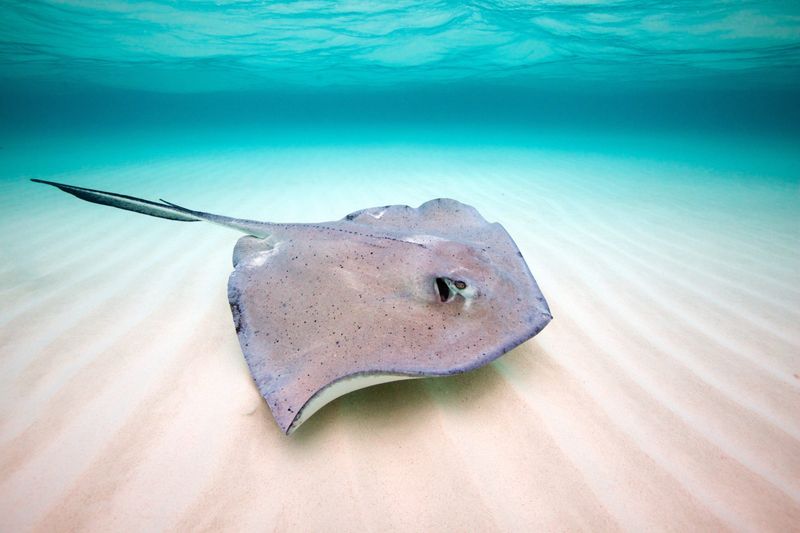
Like underwater butterflies, these rays boast wingspans reaching six feet across! Their distinctive snout gives them their name, while their powerful swimming makes them a thrill to spot.
Often found in deeper waters, they occasionally venture into swimming areas. Maintain a respectful distance if you see one – their larger size means a potentially more powerful sting.
4. Roughtail Stingray’s Thorny Warning
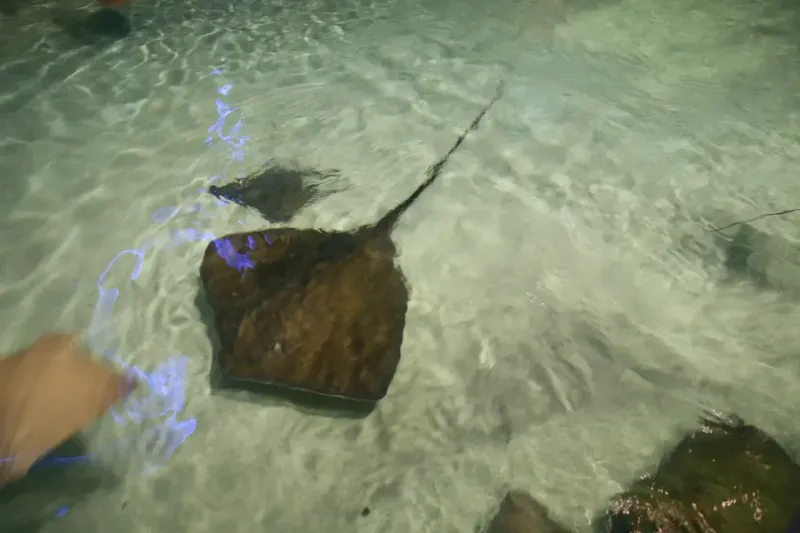
Imagine a stingray with attitude! These hefty creatures feature rows of thorn-like spines along their tails in addition to their venomous barb – nature’s way of saying “keep your distance.”
Frequently spotted in deeper coastal waters, they sometimes visit the shallows. Their distinctive thorny tail makes identification easy, so if you spot one, give it plenty of space.
5. Yellow Stingray’s Polka-Dot Pattern
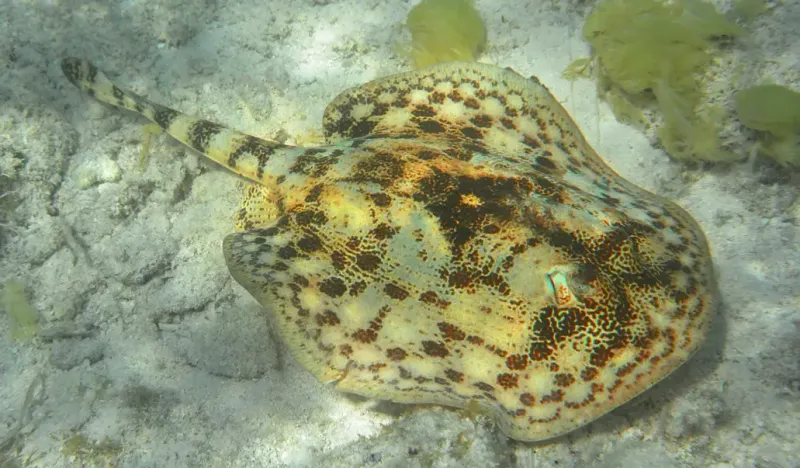
Fashion-forward and fabulous! These smaller rays sport eye-catching yellow or brown bodies decorated with dark spots or rings, making them the leopard print of the ray world.
Often found near coral reefs and rocky areas, they’re less likely to be stepped on than sand-dwelling species. Still, watch your step when exploring these habitats – their coloration provides excellent camouflage.
6. Spotted Eagle Ray’s Graceful Flight
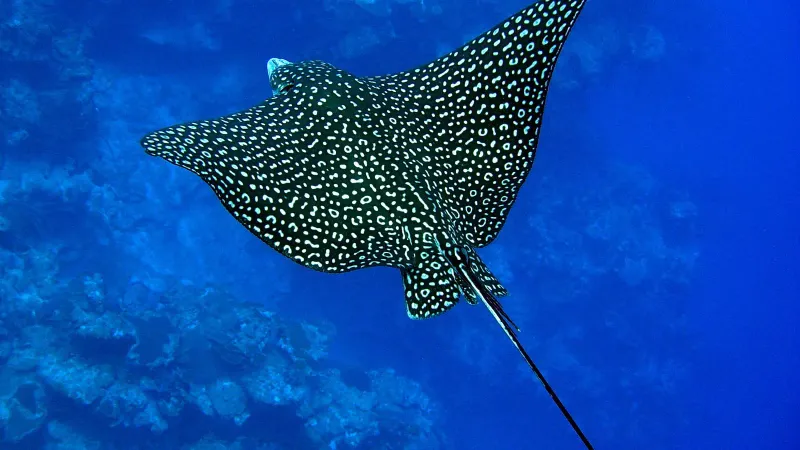
Sky-blue water dancers with white polka dots, these rays practically fly underwater! Their distinctive pointed snout and long whip-like tail make them unmistakable among Florida’s ray population.
Usually keeping to deeper waters, they occasionally leap completely out of the water! While not typically aggressive, their size demands respect – maintain distance if you’re lucky enough to spot one.
7. Cownose Ray’s Social Gatherings
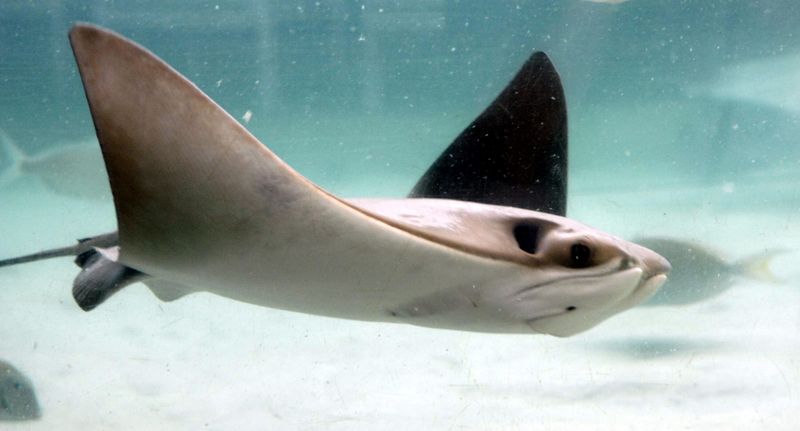
Party animals of the ray world! These social creatures travel in large groups called ‘fevers,’ sometimes containing hundreds of individuals. Their distinctive indented snout resembles a cow’s nose, giving them their quirky name.
When massive schools arrive, it’s best to pause your swim. While generally gentle, the sheer number of rays can increase sting risk. Watch from shore as they create an amazing natural spectacle!
8. Smooth Butterfly Ray’s Impressive Size

Pancake-flat and wider than your arms can stretch, these gentle giants can reach widths of 4 feet! Unlike most rays, their tails lack the notorious barb, making them one of the safer rays to encounter.
Their massive size can still startle swimmers. If you spot one of these gentle giants, resist the urge to touch – observe respectfully from a distance to avoid stressing this harmless creature.
9. Lesser Electric Ray’s Shocking Defense
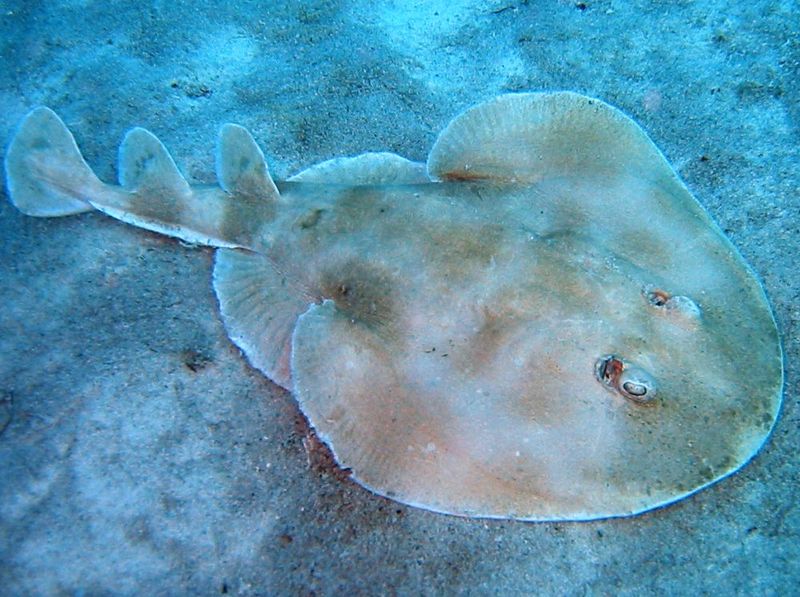
Nature’s underwater taser! These unusual rays don’t rely on a stinging barb for protection – they deliver electric shocks up to 37 volts. Their round, pudgy bodies and lack of a prominent tail make them look deceptively harmless.
Found lurking in sandy or muddy bottoms, they’re masters of ambush. If spotted, never handle these rays – their shock won’t kill you, but it’ll definitely ruin your beach day!
10. Bat Ray’s Distinctive Face
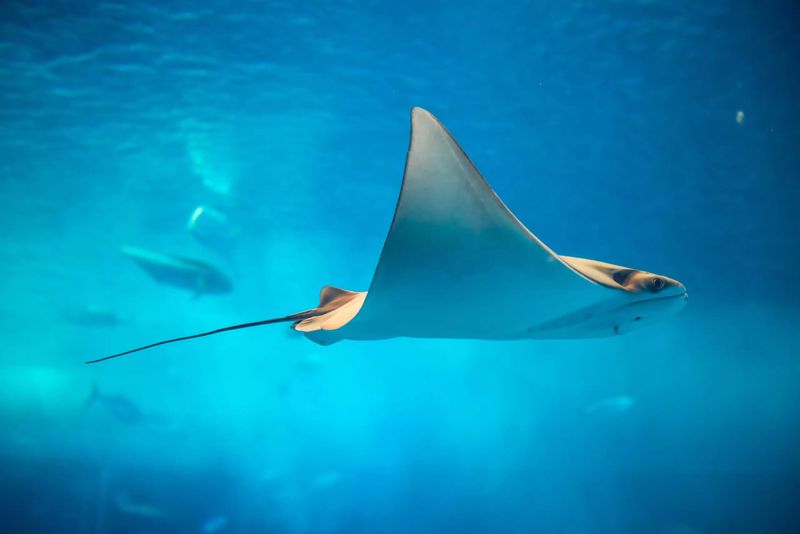
With a face only a mother could love! These rays feature a protruding head that resembles bat ears, giving them their memorable name. Their powerful jaws crush shellfish with ease – nature’s underwater nutcrackers.
Typically found in bays and estuaries, they’re less common on open beaches. Their strong jaws focus on crustaceans, not humans, but their barbed tail demands respect – maintain safe distance if encountered.
11. Chupare Stingray’s Riverine Adventures
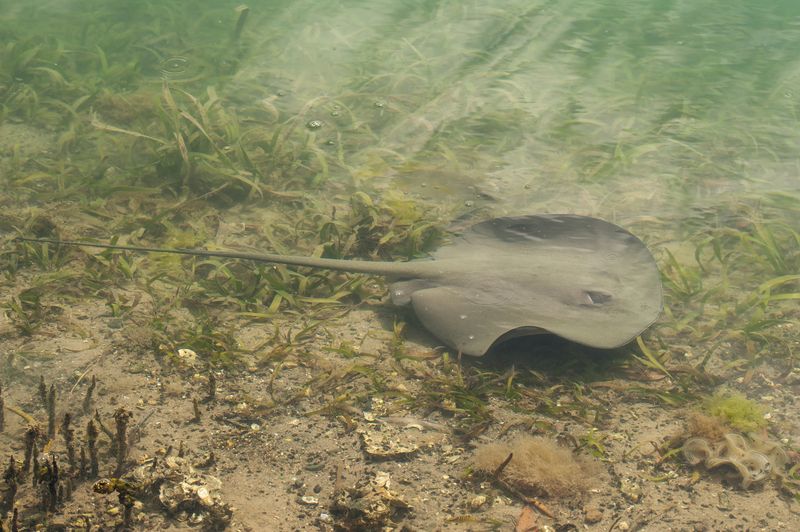
Fresh water explorers! These adaptable rays venture far up Florida’s rivers, sometimes surprising freshwater swimmers who didn’t expect to encounter rays. Their circular disc-shaped bodies distinguish them from their marine cousins.
Popular spots include spring-fed rivers where visibility is high. When river swimming, employ the same shuffling technique used in ocean waters – these rays still pack a painful sting despite their freshwater habitat.
12. Giant Manta Ray’s Majestic Presence
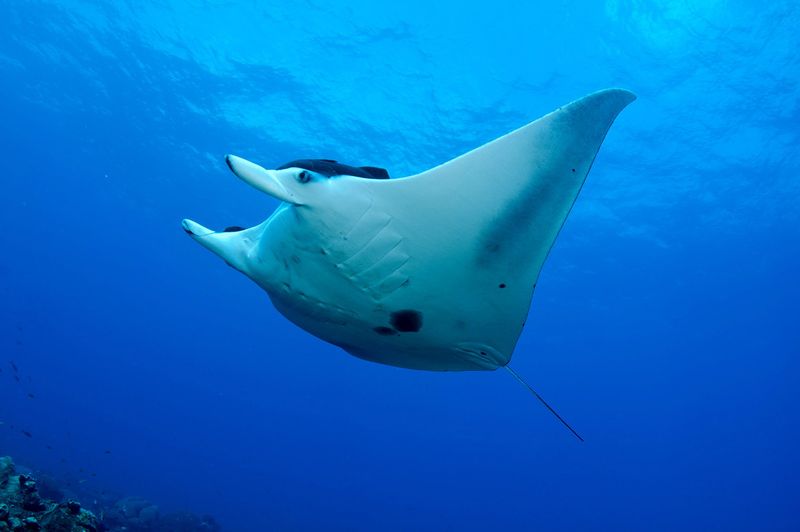
Ocean royalty gliding through Florida’s deeper waters! These massive creatures can span 23 feet wing-to-wing – wider than most boats! Unlike their stingray relatives, mantas lack a venomous barb, making them harmless to humans.
Occasionally spotted from boats or during deep dives, these gentle giants feed on plankton. If you’re blessed with a manta encounter, maintain respectful distance – these magnificent creatures are protected under conservation laws.
13. Spiny Butterfly Ray’s Thorny Attitude
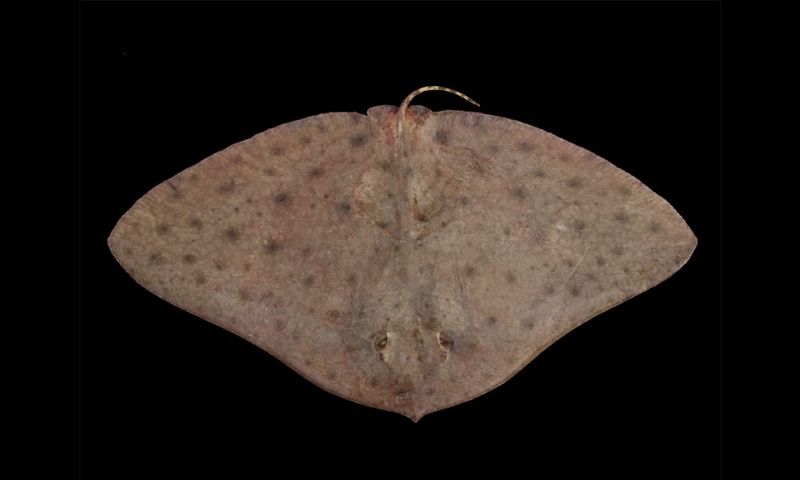
Armed and dangerous! Unlike their smooth butterfly cousins, these rays feature small spines across their backs and a venomous barb. Their wide, flat bodies resemble butterfly wings, creating a deceptively beautiful appearance.
Common in Florida’s Gulf waters, they prefer sandy bottoms. Their spiny upper surface makes them instantly recognizable. The stingray shuffle is essential when wading in their territory – those spines mean business!
14. Bullnose Ray’s Distinctive Snout
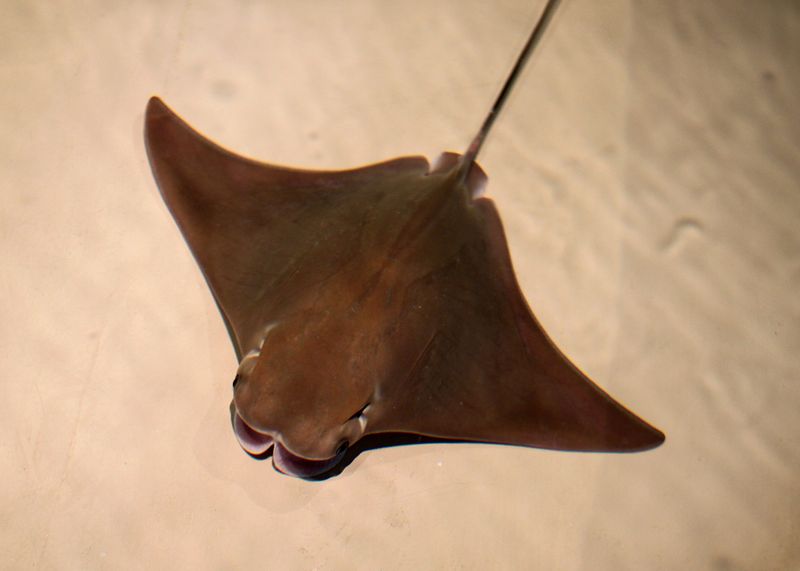
Sporting a blunt, rounded snout that resembles a bull’s nose, these rays add character to Florida’s underwater landscape. Medium-sized and muscular, they use their powerful jaws to crush shellfish hiding in the sand.
Often confused with cownose rays, bullnose rays typically travel alone or in smaller groups. The stingray shuffle remains your best defense when exploring their preferred shallow, sandy habitats.
15. Pelagic Stingray’s Deep Blue Home
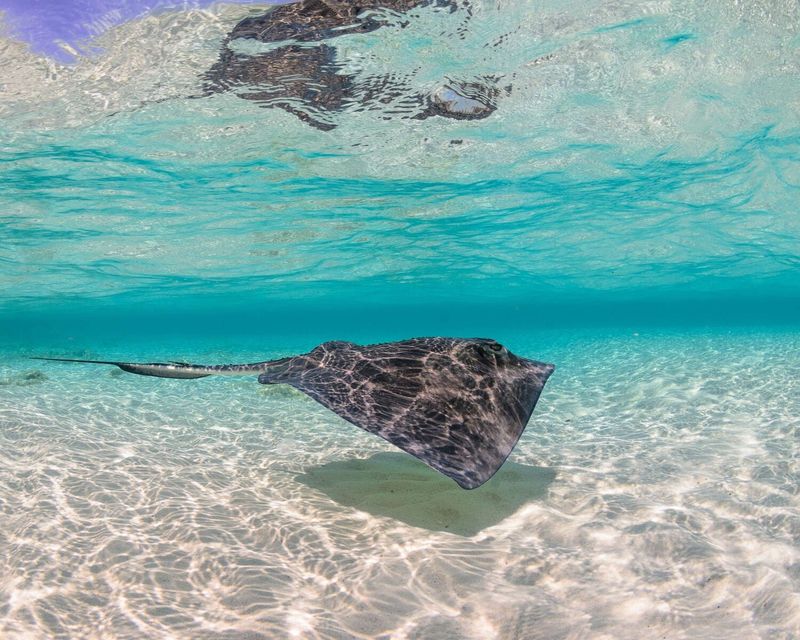
Rare coastal visitors, these deep-water specialists occasionally surprise Florida beachgoers when ocean currents bring them nearshore. Their distinctive purplish-black coloration and diamond shape make them stand out from their sandy-colored cousins.
Unlike most rays, they spend most of their time swimming in open water rather than resting on the bottom. If spotted near shore, it likely means unusual current patterns – a good time to be extra cautious in the water.




